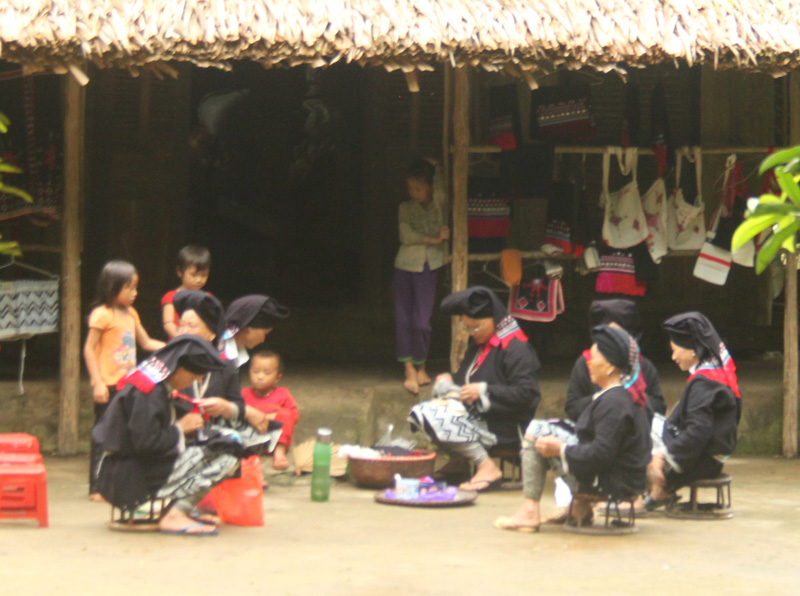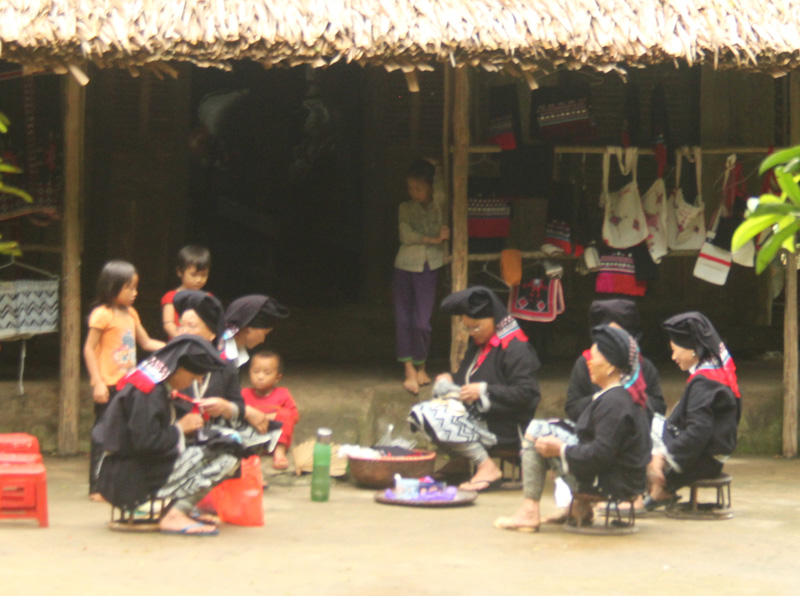


In recent years,
community-based tourism has been established and lured more domestic and
international visitors, gradually turning an unheard location into a familiar
destination for tourists.

People
of the Dao ethnic group in Sung hamlet of Cao Son commune (Da Bac district)
with traditional brocade embroidering – a cultural trait that fascinates
tourists.
Nguyen Van Hien, head of the Culture and Information Office of Da Bac
district, said that after a trip to the district, an Australian tourist who
fell in love with the natural landscapes and people of Da Bac contacted the
Australian Foundation for the Peoples of Asia and the Pacific (AFAP) to bring
the community-based tourism model to the mountainous locality.
Since 2014, the organisation
has given funding to four households in Ke hamlet in Hien Luong commune and Da
Bia hamlet of Tien Phong commune to help them build and fix their houses and buy
necessaries such as blankets, bed sheets, pillows and mattresses, in order to
provide lodging and dining services for tourists. The organisation also
provided training courses on community-based tourism and organised trips for
local people and arrange field trips to Mai Chau district (Hoa Binh) and
Besides, it set up teams and groups to serve tourism like food, guest-receiving
and service groups. Though they are unfamiliar with tourism at first, local
people got accustomed to and became skilful in serving guests. To date, the AFAP
project has helped eight families in Hien Luong, Cao Son and Tien Phong
communes operate community-based tourism while providing counselling for two
households in Tien Phong commune. Along with AFAP project, the province has
paid attention to and supported households operating tourism with amplifiers,
loudspeakers, gongs, traditional music instruments, blankets, bed sheets,
pillows and mattresses.
The homestay facility of
Dang Van Xuan’s family is located among simple leaf roofed houses local people and
surrounded by the lush green of the forest. The house still keeps its wooden
walls and cottage roof while being renovated with tiled floor and wooden
furniture that creates a sense of closeness to the nature but modernity.
Leaving Sung hamlet, we
were back to the lake to come to Ke hamlet in Hien Luong commune and Da Bia
hamlet in Tien Phong commune. In Da Bia hamlet, we met a group of guests who were
architects living in
Dinh Tuan, a tourist, said: "We are excited to come here and experience the
life of the locals who live next to the Da river’s lake. Though we are on a
trip, we feel like being home, as we are like members of a family. Everyone here
is friendly and hospitably. The air is fresh while landscapes are wonderful. We
can contemplate the overview of the lake from the stilt wooden house. In
addition, we are able to enjoy traditional dishes like grilled fish, chicken cooked
with bamboo shoots, steamed fish wrapped in banana leaves and five-coloured
steam glutinous rice, which are delicious. We really enjoy our time here and
will come again”.
Not only that, tourists can
participate in many other interesting activities such as trekking, cycling,
visiting hamlets and villages and kayaking or paddling raft on the lake to take
pleasure in the gigantic and mystical "in-land” Ha Long Bay and explore the
life of local residents living around the lake. When the night falls, tourists can
join the bamboo pole dance and xoe dancing with the locals by the bonfire,
while enjoying art performances of young people from the Muong ethnic group./.